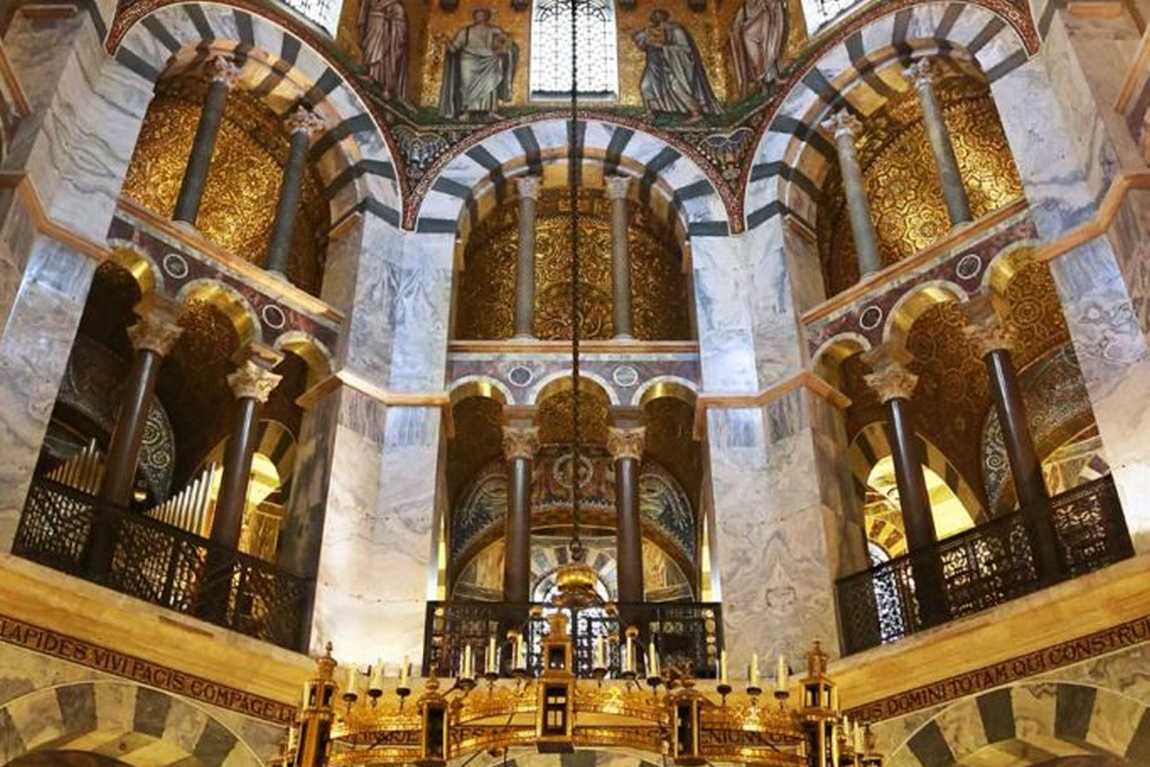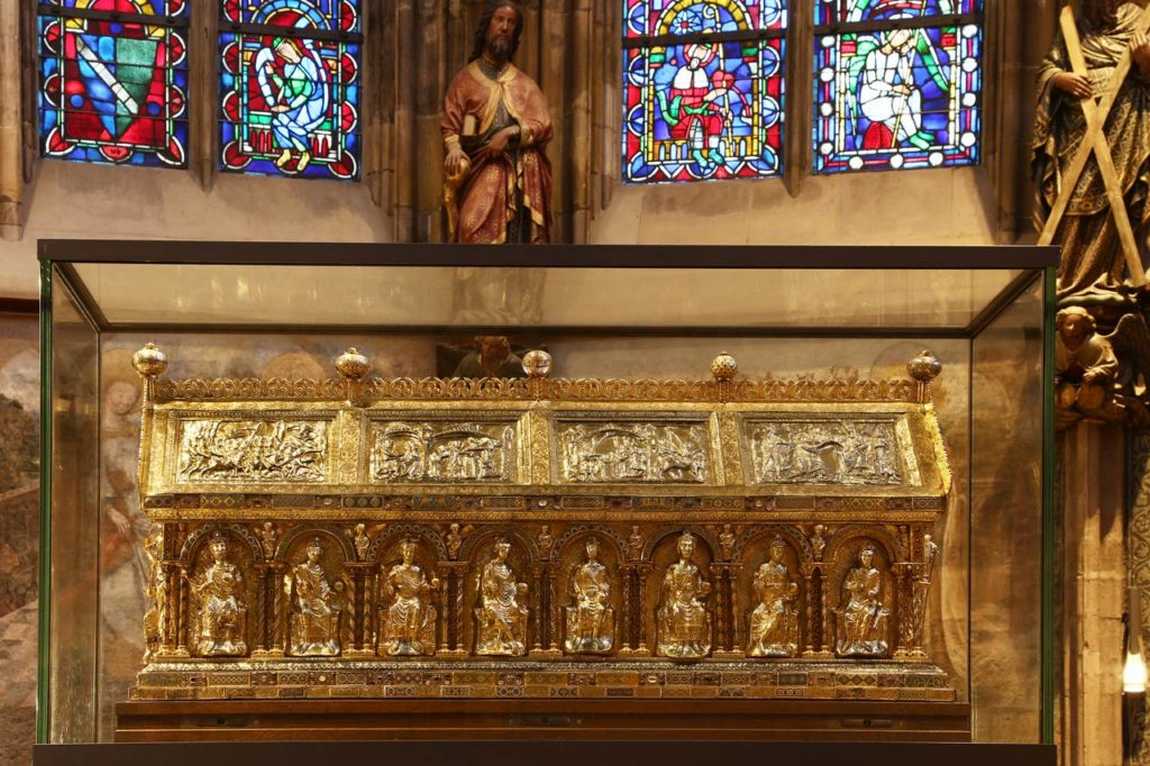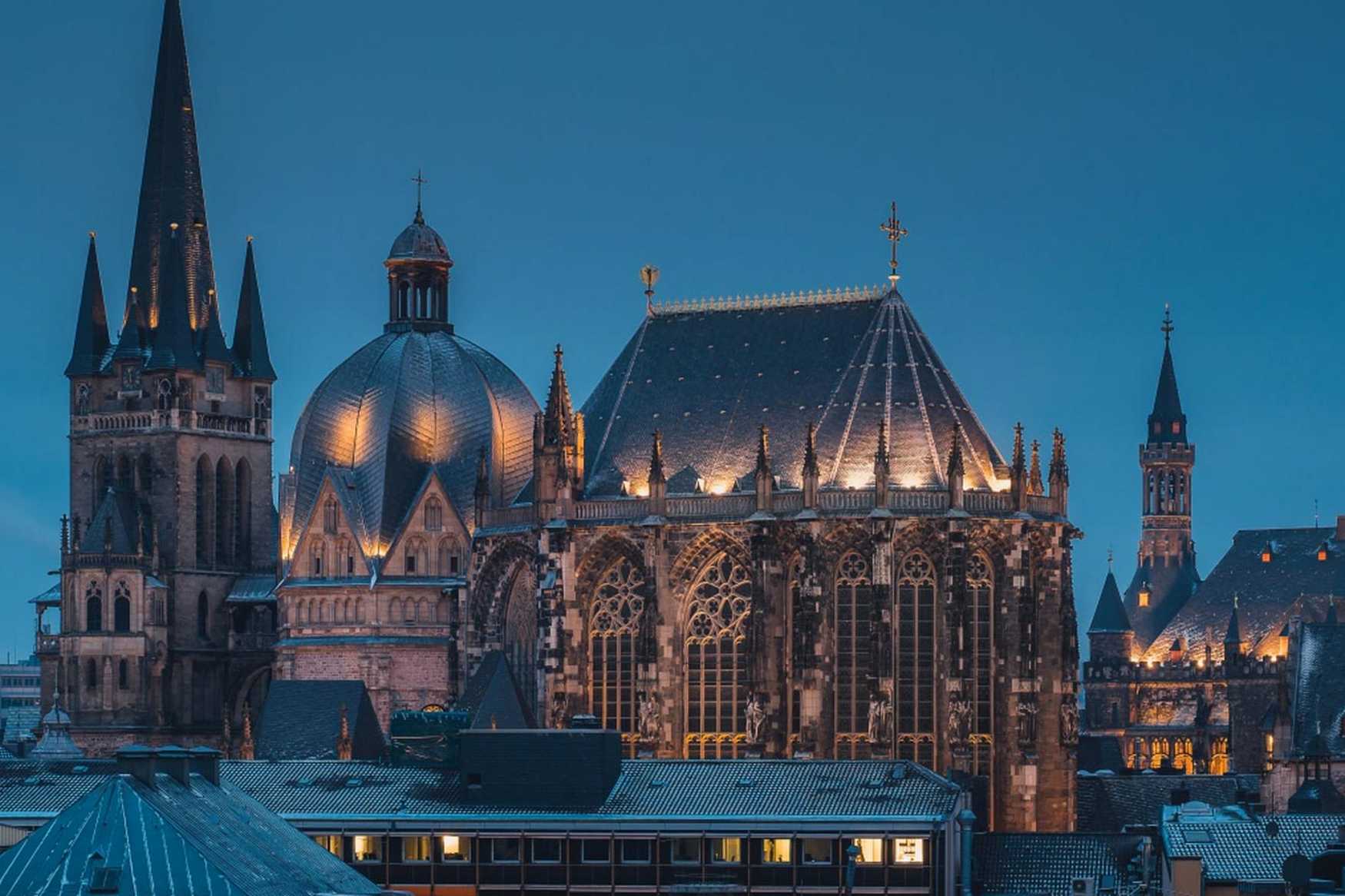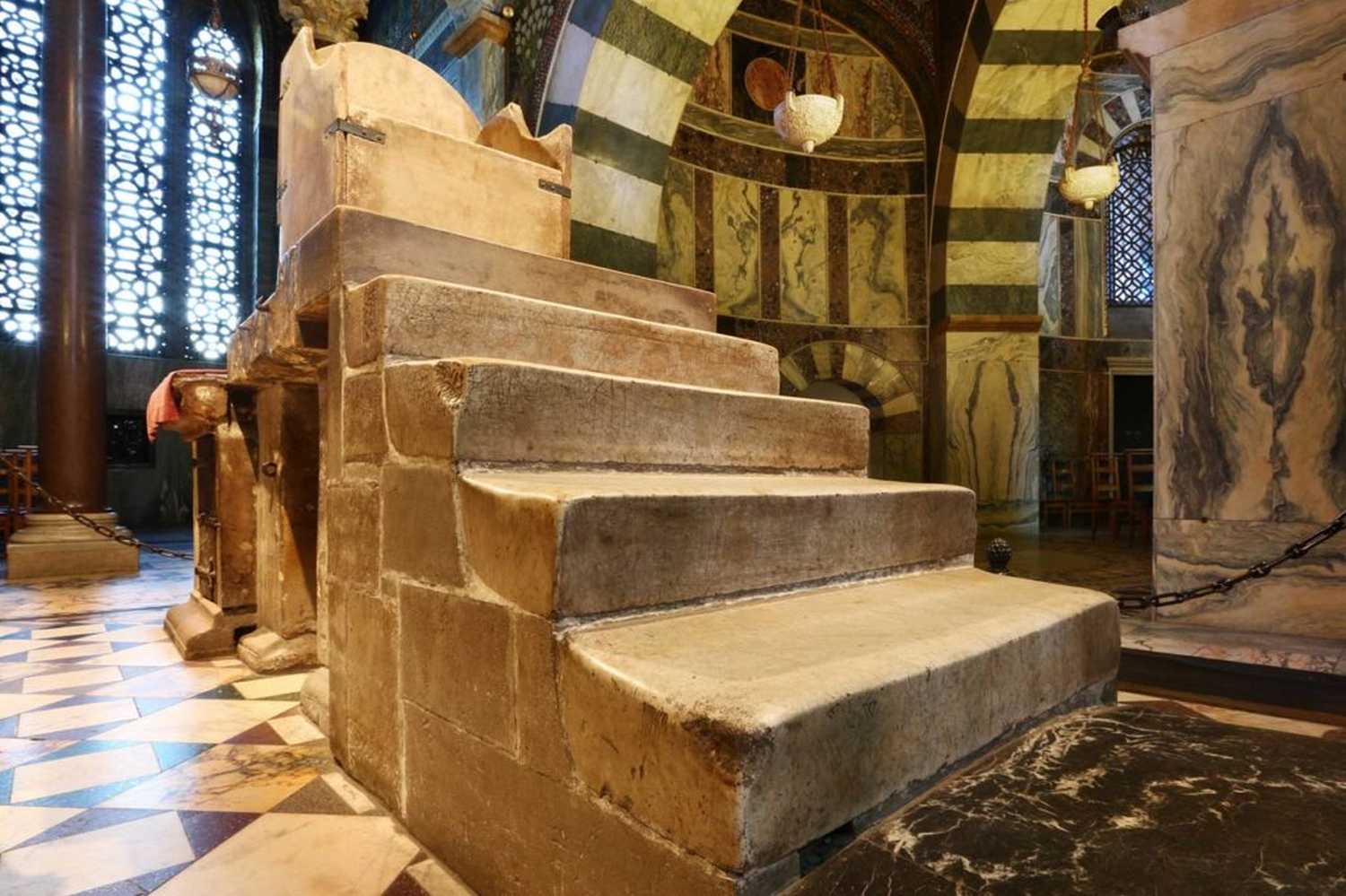Aachen Cathedral, the Palatine Chapel, is a testament to over a millennium of European history. Founded by Charlemagne in the late 8th century, this architectural marvel witnessed the coronation of German kings and the awe of countless pilgrims. Its blend of Carolingian, Ottonian, and Gothic styles makes it a unique masterpiece.
Recognized as a UNESCO World Heritage site, Aachen Cathedral is not just a building; it's a journey through time. Whether you're a history buff, an architecture enthusiast, or a family looking for an educational adventure, this cathedral promises an unforgettable experience.
Highlights
- Throne of Charlemagne: A symbol of medieval power and authority.
- Marienschrein (Shrine of St. Mary): Houses significant Christian relics.
- Barbarossa Chandelier: A stunning piece donated by Emperor Frederick Barbarossa.
Contents
 https://www.aachenerdom.de/
https://www.aachenerdom.de/
Here is Why Your Kids Will Find it Interesting
Aachen Cathedral is worth visiting with kids aged 8 and up. The cathedral's rich history and stunning architecture will captivate their imaginations. The stories of kings and emperors, along with the fascinating relics, make history come alive. Plus, the awe-inspiring Barbarossa Chandelier and the majestic Throne of Charlemagne will leave a lasting impression.
Family-friendly Features
- Interactive Tours: Engaging guided tours tailored for families.
- Educational Programs: Workshops and activities designed for children.
- Accessible Facilities: Amenities to accommodate families with young children and differently-abled visitors.
History and Architecture
Aachen Cathedral's story begins with Charlemagne, who founded it around 796 AD. The cathedral was consecrated in 805 AD, marking the beginning of its long and storied history. Charlemagne's vision was to create a center of Christian worship and a symbol of his empire's power. He aimed to emulate the grandeur of the Byzantine Empire, drawing inspiration from the Church of San Vitale in Ravenna.
The Palatine Chapel, the core of the cathedral, was designed to reflect this ambition, with its octagonal shape and intricate mosaics. Over the centuries, the cathedral became a focal point for the Holy Roman Empire, hosting the coronations of 31 German kings. Each ruler left their mark, contributing to the cathedral's evolving architectural style and rich historical tapestry.
Architectural Styles
The cathedral's architecture is a combination of several styles:
- Carolingian Architecture: The original Palatine Chapel, with its octagonal design, is a prime example of Carolingian architecture.
- Ottonian and Staufian Influences: Later additions and renovations introduced Ottonian and Staufian elements, enriching the cathedral's architectural tapestry.
Notable Architectural Features
- Octagonal Palatine Chapel: The heart of the cathedral is a masterpiece of Carolingian design.
- Gothic Choir: Added in the 14th century, the Gothic choir enhances the cathedral's grandeur with its intricate details and soaring arches.
 https://www.aachenerdom.de/
https://www.aachenerdom.de/
Key Features and Artifacts
Throne of Charlemagne
The Throne of Charlemagne is one of the cathedral's most significant artifacts. Used during the coronation of German kings, it symbolizes medieval power and authority. Its simple yet imposing design reflects the grandeur of Charlemagne's reign.
Marienschrein (Shrine of St. Mary)
The Marienschrein, or Shrine of St. Mary, is a stunning reliquary that houses some of Christianity's most revered relics, including St. Mary's cloak and Christ's swaddling clothes. This shrine, crafted in the 13th century, is a medieval art and craftsmanship masterpiece.
Barbarossa Chandelier
The Barbarossa Chandelier, donated by Emperor Frederick Barbarossa, is a breathtaking piece of art. This massive, wheel-shaped chandelier hangs in the center of the Palatine Chapel, symbolizing the heavenly Jerusalem. Its intricate design and historical significance make it a must-see.
 https://www.aachenerdom.de/
https://www.aachenerdom.de/
Religious and Cultural Significance
Aachen Cathedral served as the coronation church for German kings for over 600 years. This tradition began with Otto I in 936 AD and continued until the 16th century. The cathedral's role in these ceremonies underscores its importance in German history.
The Aachen Pilgrimage, or Aachener Heiligtumsfahrt, is a significant religious event that dates back to the Middle Ages. Held every seven years, it attracts thousands of pilgrims who venerate the cathedral's relics, including St. John's beheading cloth and Christ's loincloth.
Influence and Legacy
Aachen Cathedral's architectural innovations influenced many other structures across Europe. Notable examples include the Essen Minster and the Old Tower in Mettlach, which reflect the cathedral's design elements.
In 1978, Aachen Cathedral was designated a UNESCO World Heritage site, recognizing its historical and cultural significance. Ongoing preservation efforts ensure this architectural gem is a testament to Europe's rich heritage.
Best Time to Visit
The best time to visit Aachen Cathedral with children is during weekdays in the morning when it's less crowded. Spring and early summer offer pleasant weather for exploring the cathedral and its surroundings.
Recommended Duration: To fully appreciate the cathedral's beauty and history, plan to spend at least 2-3 hours.
Resume
Aachen Cathedral is a historical and architectural marvel that offers a rich educational experience for families. From its founding by Charlemagne to its role as a coronation church, the cathedral's significance is unparalleled. Its stunning features and artifacts make it a must-visit destination.











